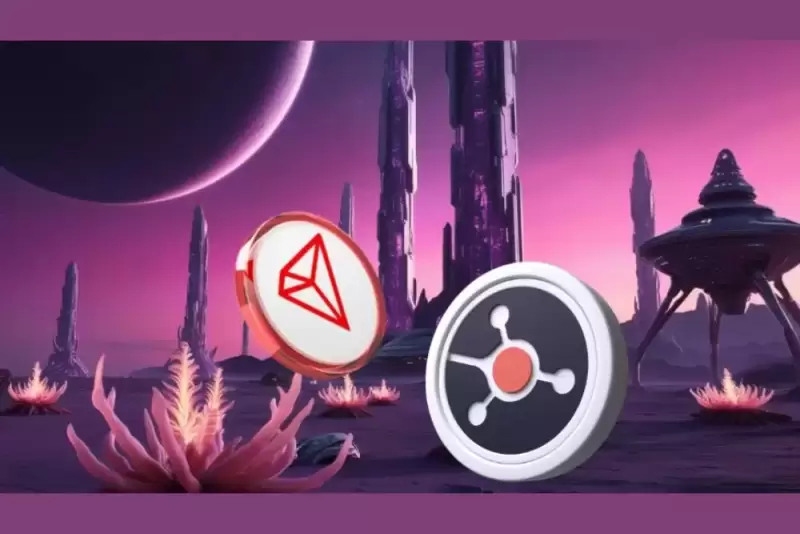 |
|
 |
|
 |
|
 |
|
 |
|
 |
|
 |
|
 |
|
 |
|
 |
|
 |
|
 |
|
 |
|
 |
|
 |
|
この課題を達成するために必要な量子コンピュータのサイズを見積もった研究者らによると、ビットコインの暗号化を解読できる量子コンピュータが将来実現可能になる可能性があるという。このベンチマークを調査することで、この研究は、将来の量子コンピューターの潜在的な機能と、量子コンピューターの進歩に伴って攻撃を受けやすくなる可能性がある、ビットコインの楕円曲線デジタル署名アルゴリズムのような安全な通信プロトコルに対する潜在的な影響に光を当てています。

Quantum Computing Poses Threat to Bitcoin Encryption, Researchers Warn
量子コンピューティングはビットコイン暗号化に対する脅威となる、研究者が警告
In a groundbreaking study published in AVS Quantum Science, researchers have projected that future advancements in quantum computing technology will render the encryption currently safeguarding the Bitcoin network vulnerable to attack.
AVS Quantum Science に掲載された画期的な研究で、研究者らは、量子コンピューティング技術の将来の進歩により、現在ビットコイン ネットワークを保護している暗号化が攻撃に対して脆弱になると予測しています。
The study, led by Mark Webber of the University of Sussex, focused on estimating the necessary size of a quantum computer capable of breaking the Bitcoin network's encryption. This benchmark serves as a gauge for the future scale of quantum computing required to accomplish more complex tasks.
サセックス大学のマーク・ウェバー氏が主導したこの研究は、ビットコインネットワークの暗号化を解読できる量子コンピューターの必要なサイズを見積もることに焦点を当てた。このベンチマークは、より複雑なタスクを実行するために必要な量子コンピューティングの将来の規模を測る尺度として機能します。
"Previous research in this area has predominantly concentrated on a specific hardware platform, namely superconducting devices," said Webber. "However, different hardware platforms exhibit significant variations in crucial hardware specifications, such as operational speed and qubit control quality."
「この分野におけるこれまでの研究は、主に特定のハードウェアプラットフォーム、つまり超電導デバイスに集中していました」とウェバー氏は述べた。 「ただし、ハードウェア プラットフォームが異なると、動作速度や量子ビット制御の品質など、重要なハードウェア仕様が大きく異なります。」
Quantum computers leverage quantum bits (qubits) instead of the conventional '1's' and '0's' used in digital information encoding. Qubits possess the unique ability to exist in a superposition state, simultaneously representing both a '1' and a '0.' This property enables an exponential increase in computational power with each additional qubit introduced, unlike the linear growth observed in traditional computing.
量子コンピューターは、デジタル情報のエンコードに使用される従来の「1」と「0」の代わりに、量子ビット (量子ビット) を利用します。量子ビットは、重ね合わせ状態で存在し、「1」と「0」の両方を同時に表すというユニークな能力を持っています。この特性により、従来のコンピューティングで観察される線形的な増加とは異なり、量子ビットが追加されるたびに計算能力が指数関数的に増加します。
The full realization of quantum computing's potential hinges on the development of error-corrected quantum computers. These machines compensate for inherent errors within the system, allowing for the execution of longer algorithms, albeit at the expense of requiring more physical qubits.
量子コンピューティングの可能性を完全に実現できるかどうかは、誤り訂正可能な量子コンピューターの開発にかかっています。これらのマシンはシステム内に固有のエラーを補償し、より多くの物理量子ビットを必要とする代わりに、より長いアルゴリズムの実行を可能にします。
"To accelerate the execution of quantum algorithms, we can increase the number of operations performed concurrently by adding more physical qubits," explained Webber. "We incorporate additional qubits as necessary to achieve the desired runtime, which is critically dependent on the operational speed at the physical hardware level."
「量子アルゴリズムの実行を高速化するには、物理量子ビットを追加することで、同時に実行される演算の数を増やすことができます」とウェバー氏は説明しました。 「望ましい実行時間を達成するために、必要に応じて量子ビットを追加しますが、これは物理ハードウェア レベルでの動作速度に大きく依存します。」
However, most contemporary quantum computers face limitations due to the restricted interaction between qubits, typically confined to neighboring qubits. Certain designs circumvent this constraint by enabling physical relocation of qubits, facilitating interactions with a broader range of their counterparts.
しかし、現代の量子コンピューターのほとんどは、量子ビット間の相互作用が制限されており、通常は隣接する量子ビットに限定されているため、制限に直面しています。特定の設計では、量子ビットの物理的な再配置を可能にすることでこの制約を回避し、より広範囲の対応物との相互作用を促進します。
Quantum computers excel at breaking encryption compared to their conventional counterparts. Secure communication protocols often rely on RSA encryption, introduced in 1977. The security of RSA stems from the computational complexity of factoring two large prime numbers, which form the basis of the public key. Deciphering a message encrypted with such a key requires knowledge of these prime numbers.
量子コンピューターは、従来のコンピューターに比べて暗号の解読に優れています。安全な通信プロトコルは、1977 年に導入された RSA 暗号化に依存することがよくあります。RSA のセキュリティは、公開キーの基礎を形成する 2 つの大きな素数を因数分解する計算の複雑さに由来します。このようなキーで暗号化されたメッセージを解読するには、これらの素数の知識が必要です。
While Bitcoin employs a distinct encryption scheme, the elliptic curve digital signature algorithm, researchers believe both methods will succumb to future quantum attacks.
ビットコインは楕円曲線デジタル署名アルゴリズムという独特の暗号化方式を採用しているが、研究者らはどちらの方式も将来の量子攻撃に屈すると考えている。
"Current state-of-the-art quantum computers possess only 50-100 qubits," said Webber. "Our estimations indicate a requirement of 30 million to 300 million physical qubits, suggesting that Bitcoin remains relatively secure against quantum attacks for the time being. However, devices of this scale are generally deemed achievable, and future advancements may further reduce the necessary size."
「現在の最先端の量子コンピューターは、わずか 50 ~ 100 量子ビットしか持っていません」とウェバー氏は述べています。 「私たちの推定では、物理量子ビットが 3,000 万から 3 億ビット必要であることが示されており、当面はビットコインが量子攻撃に対して相対的に安全であることを示唆しています。しかし、この規模のデバイスは一般に実現可能であると考えられており、将来の進歩によって必要なサイズはさらに縮小される可能性があります。」 」
Bitcoin may have the capability to implement a "hard-fork" to adopt a quantum-resistant encryption technique, but such a transition could introduce network scaling challenges due to increased memory demands.
ビットコインには、量子耐性のある暗号化技術を採用するための「ハードフォーク」を実装する機能がある可能性がありますが、そのような移行では、メモリ需要の増加によりネットワーク スケーリングの課題が発生する可能性があります。
The study, titled "The Impact of Hardware Specifications on Reaching Quantum Advantage in the Fault Tolerant Regime," provides valuable insights into the imminent challenges and opportunities presented by quantum computing's inexorable march forward.
「フォールトトレラント体制における量子アドバンテージの達成に対するハードウェア仕様の影響」と題されたこの研究は、量子コンピューティングの容赦ない進歩によってもたらされる差し迫った課題と機会についての貴重な洞察を提供します。
免責事項:info@kdj.com
提供される情報は取引に関するアドバイスではありません。 kdj.com は、この記事で提供される情報に基づいて行われた投資に対して一切の責任を負いません。暗号通貨は変動性が高いため、十分な調査を行った上で慎重に投資することを強くお勧めします。
このウェブサイトで使用されているコンテンツが著作権を侵害していると思われる場合は、直ちに当社 (info@kdj.com) までご連絡ください。速やかに削除させていただきます。



























































